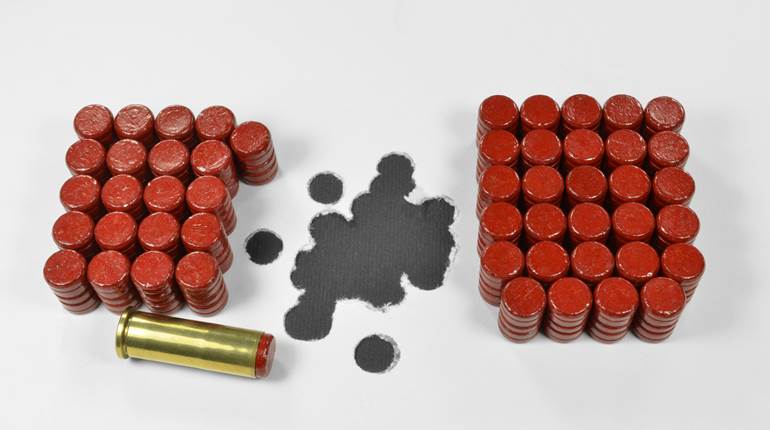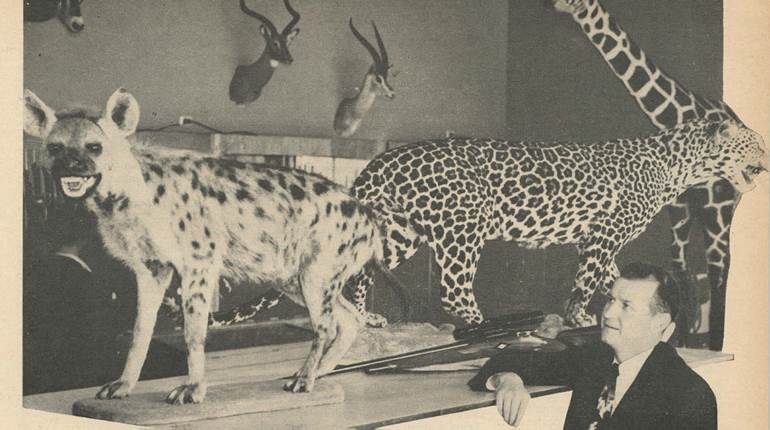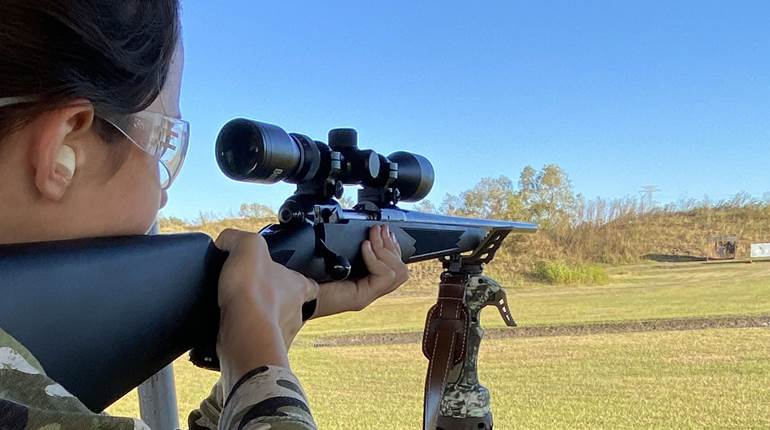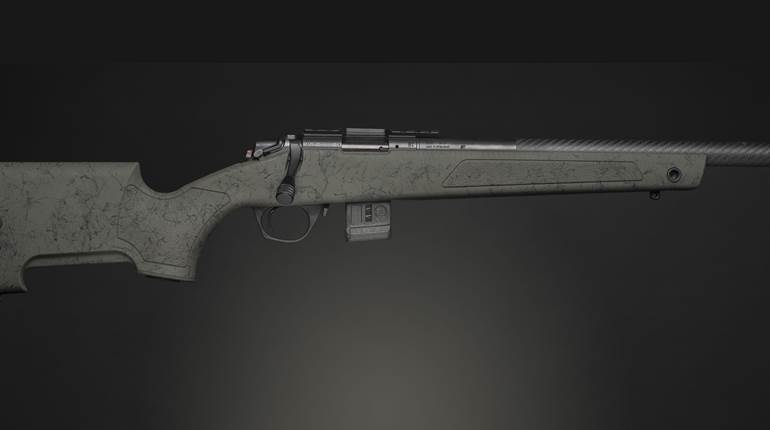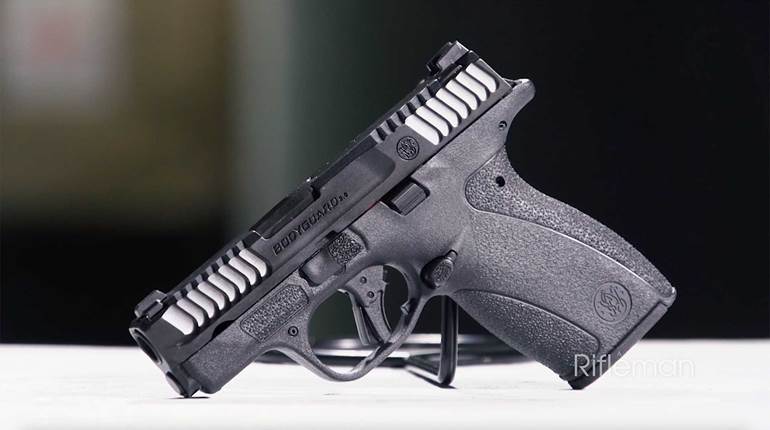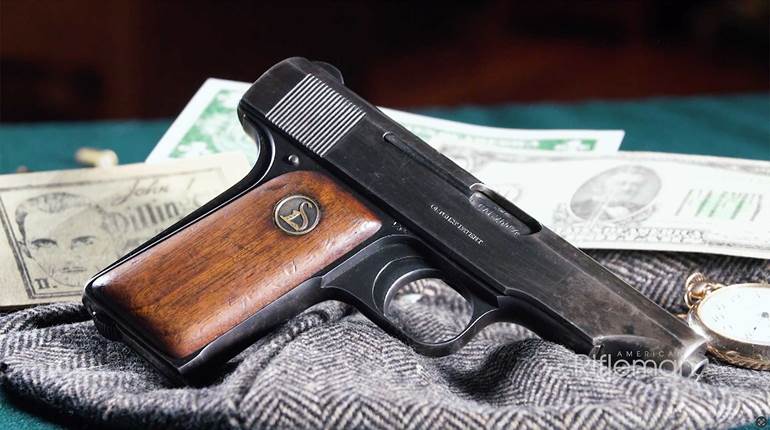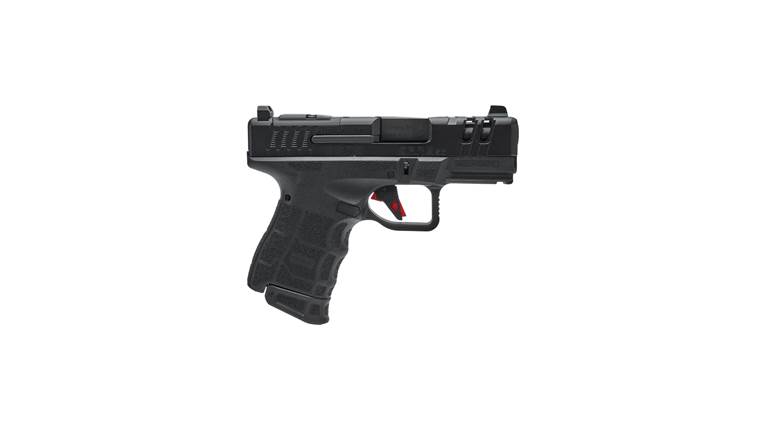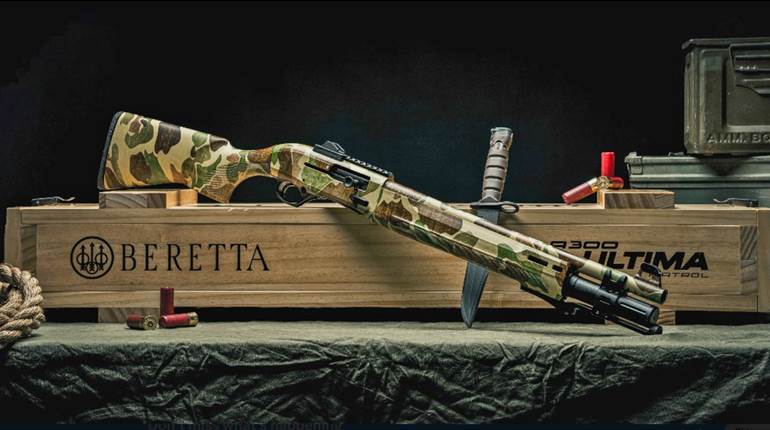
This article, "100 Years With The Perfect Cartridge" appeared originally in the in the September 2006 issue of American Rifleman. To subscribe to the monthly magazine, visit NRA’s membership page.
No less than Mr. .270 himself, Jack O’Connor, once said, “The .30-’06 has a wider range of usefulness than any other American cartridge.” Who am I to argue with Jack O’Connor? The .30-’06 Sprg. turns 100 years old this year and by rights any cartridge that old should now be an antiquated, outdated back-shelf history lesson. Instead it remains the number-one, best-selling big-game cartridge listed in the catalog of every major ammo maker. The .30-’06 Sprg. was so far ahead of its time that it may not have yet peaked. If the “Perfect Storm” was a convergence of extremely rare elements forming together against all odds, then the .30-’06 is truly the “perfect cartridge.”
 Cartridge drawing courtesy of SAAMI.org.
Cartridge drawing courtesy of SAAMI.org.
Originally developed as a military cartridge, the .30-’06 Sprg. served well through two world wars, and its military record is distinguished and above reproach. But for the past half-century, this cartridge has been retired from military duty and now earns its stripes primarily in the hunting fields. Nonetheless, everything the .30-’06 accomplished as a fighting cartridge—and make no mistake, it was one of the all-time greatest—pales in comparison to its accomplishments in the hunting world. The truth be told, we could easily hunt any mammal in North America and most of the world with the .30-’06 Sprg. with little compromise. But without new cartridges to tout, how would we gun writer types buy shoes for our kids?
The .30-’06 Sprg. was actually a result of a failure of sorts. During the Spanish-American War in 1898, most United States troops were armed with Krag-Jorgensen rifles in .30-40 Krag if they were lucky, or with blackpowder, single-shot Trapdoor Springfields in .45-70 if they were not. The “other guys” had then-new Mauser rifles chambered for 7x57 mm Mauser, and they gave our troops a tough go of it as a result. Despite being badly outnumbered, the Spanish forces still managed to inflict huge casualties on our troops partly because they were armed with superior rifles.

Major General Julian S. Hatcher (who, incidentally, retired in 1946 after 41 years of service in the U.S. Army to become Technical Editor of American Rifleman) described what happened in his classic, Hatcher’s Notebook:
"The Mauser rifles used by the Spaniards proved to be formidable weapons, and gained a reputation which caused our weapons to be regarded so critically that immediately after the war the Chief of Ordnance ordered the preparation of the pilot model of a new rifle … This gun had a 30-inch barrel and was fitted with a rod bayonet housed in the stock beneath the barrel. The mechanism was a modification of the Mauser action; it had two locking lugs in the front of the bolt instead of one at the rear as did the Krag. The rimmed cartridge was fed from five-shot clips into a single-row magazine extending below the stock."
Note that the military was looking for a new rimmed cartridge, which makes me suspect it did not fully understand that the 7x57 mm’s rimless case was one of its advantages. After testing, it was recommended that the magazine be changed to allow the cartridges to lie in a “zig-zag manner” so the magazine did not project below the stock. It was also recommended that the cartridge be a cannelured design. Hatcher explained later in the book that cannelure as used here describes the extractor cut in the case head of a rimless cartridge. The resulting rifle was the Model of 1901.
In April 1902, $1,700 was appropriated to cover the cost of 100 experimental rifles. With a few changes recommended after testing these prototype rifles, it was approved by the secretary of war and adopted as the “U.S. Magazine Rifle, Model of 1903, Caliber .30.” Its cartridge was commonly known as the .30-’03 Springfield. The rimless cartridge used the old Krag 220-gr. round-nose, full-metal-jacketed bullet at 2300 f.p.s. —about 100 f.p.s. faster than the Krag.
 Image courtesy of Jonathon Krisko and "The Model Of 1903 Springfield: A Collector's Perspective."
Image courtesy of Jonathon Krisko and "The Model Of 1903 Springfield: A Collector's Perspective."
The cartridge was pretty much dead on arrival as the military still didn’t fully appreciate that more aerodynamic spitzer bullets were the worldwide trend. It took another three years, but on Oct. 15, 1906, an improved version of the cartridge was approved by the secretary of war. This one was called “Cartridge, Caliber .30, Model of 1906.” It used a pointed spitzer-type 150-gr. bullet with a muzzle velocity of 2700 f.p.s.
Because this bullet was much shorter than the 220-gr. round-nose, the .30-’03 case had a longer neck than was necessary. So the cartridge case was shortened by 0.07", and with that, a king was born. Like many true and worthy kings, the .30-’06 Sprg. first proved itself on the battlefield, then later won the hearts and minds of the masses, including me.
 Image courtesy of Bruce N. Canfield and "'Poor Invention' To America’s Best: The M1903 Service Rifle."
Image courtesy of Bruce N. Canfield and "'Poor Invention' To America’s Best: The M1903 Service Rifle."
As soon as I graduated high school and got a real job, I decided to buy a rifle dedicated to whitetail hunting. There was never any doubt about the cartridge, because the .30-’06 had attained almost legendary status in my gun-addicted mind. The .30-’06 had it all—modern design, power to spare, and it was available in a lot of interesting rifle designs. The one I coveted was the Remington Model 760 pump-action. With a $2-an-hour job, it took a while, but by October I had saved enough money to buy the rifle and a Weaver K-4 scope.
For more than a decade, it was my primary deer-hunting rifle. I still have that first rifle, but a lot of .30-’06-chambered guns have come and gone. At one point, I had 16 different .30-’06-chambered firearms in my gun vault. With so many options, it’s inevitable that some important events happened while using .30-’06 rifles, and it’s these that help form our opinions about rifle cartridges, both pro and con.
Twenty-four years ago, I finally had an opportunity to hunt outside of New England for something other than whitetails or black bears. When I traveled to Northern Quebec to hunt caribou in 1984, it was the first time I used an airplane to reach a hunting destination. And it was the first time I hunted any animal called a “bull.”
Like any smart gun guy, I used the trip as an excuse for a new rifle. I took one of the new Thompson/Center TCR 83 single-shots, chambered in .30-’06, of course. I shot a very nice bull on that trip, and it changed my life. That caribou hunt was a catalyst that led eventually to my switching careers and working full-time in the hunting industry. As Robert Frost said so well, “… and that has made all the difference.”

The .30-’06 is important because it brought hunters into the modern world. When it was introduced in 1906, big-game hunting was still dominated by lever-action rifles shooting cartridges that were throwbacks to the blackpowder era. The first successful modern smokeless powder, high-velocity hunting cartridge was the .30-30 Win., and in 1906, it was still considered a cutting-edge design. But, with velocity approaching 3000 f.p.s. and pointed aerodynamic bullets, the .30-’06 launched a revolution. The Mauser-style bolt-action design was inherently more accurate than any lever-action and far easier to equip with a scope. When that accuracy combined with the ballistic performance of this new cartridge, the world of big-game hunting changed forever. Suddenly, calling the .30-30 Win. “a modern, high-velocity cartridge” seemed a bit silly.
The .30-’06’s sporting life began in 1905 when Winchester chambered its 1895 lever-action in .30-’03. That primed the interest of civilian shooters, so Winchester followed with the .30-’06 in 1908.
The 1895 is believed to be the first sporting rifle chambered for the .30-’06. At that time, lever-actions with tubular magazines ruled the hunting world. The box-magazine 1895 lever-action rifle could handle the new-fangled pointy bullets, and when chambered for the barn-burning, high-velocity .30-’06, it attained a performance level never before imagined from a lever-action. It was certain to get the attention of a lot of hunters, including Theodore Roosevelt.

Everybody knows that T.R. took an 1895 in .405 Win. to Africa. But the .30-’06 was also prominent on the trip. His son Kermit used an 1895 in .30-’06 on their famous African safari, while T.R.’s .30-’06 was a modified Springfield.
With the arrival of the Springfield rifle and the .30-’06 cartridge, the lever-action dominance was soon to falter. The future was bolt-action rifles and bottlenecked cartridges.
The market responded with Remington leading the charge. In 1921, it introduced the Model 30 bolt-action rifle. Built using leftover parts from the Model 1917 Enfields made during the war, the gun was, of course, offered in .30-’06. Interestingly enough, it was also offered in 7x57 mm Mauser.
Winchester followed in 1925 with the Model 54 bolt-action. It was similar to the Mauser 98 and the M1903 Springfield, and it was chambered in .30-’06, as well as a sassy new youngster called the .270 Win.
In 1928, Savage introduced the Model 40 and Model 45 bolt-actions in .30-’06. By then, it was becoming clear that any company wanting to stay in business had better produce a .30-’06.
“I choose the .30-caliber U. S. Government Model 1906 cartridge as the ‘All-around Cartridge for American Big Game.’ It has the killing power, the accuracy, the flat trajectory, the small recoil and the long accuracy life.”
—Lt. Col. Townsend Whelen, Outdoor Life, 1913
These days, the .30-’06 is offered in bolt-action, lever-action, single-shot, pump-action, semi-automatic and straight-pull hunting rifles. In fact, I don’t think there is a single hunting-rifle design that’s not offered in .30-’06. Nor do I think there is a single cartridge logging more time in the North American hunting fields than the .30-’06. That one point alone is a durable tribute to the legacy of the single-greatest hunting cartridge of our time.
The .30-’06 is just as good at hunting whitetails in the thick woods as it is at sniping antelope on the prairie. It can handle coyotes, bears, moose, elk, sheep and groundhogs—and all without compromise. I once used it in Russia to shoot a brown bear. This is as far from a specialty cartridge as you can get, unless that specialty is one gun for hunting everything.
The .30-cal. offers the widest range of bullet choices of any popular hunting-bullet diameter—100 grs. to 220 grs. from the big names and an even wider selection from the smaller boutique bullet makers. You can get the bullets in just about every style, shape, configuration and design imaginable, including solids.

How flat will the .30-’06 shoot compared to other cartridges? When compared against the .270 Win. with both firing 150-gr. Nosler Ballistic Tip bullets and using a 200-yd. zero, the .30-’06 drops 7.25" at 300 yds., which is slightly better than the .270 Win. that drops 7.33". By comparison, the mighty .300 Win. Mag. with the same bullet and zero, drops 5.44" at 300 yds. That’s a gain of only 1.81" difference at 300 yds. but with a lot more recoil and muzzle blast. One big and often-overlooked advantage of the .30-’06 is that it’s a very user-friendly hunting cartridge with moderate recoil. That 1.81" means nothing if you flinch 1.81 ft. with the magnum.












